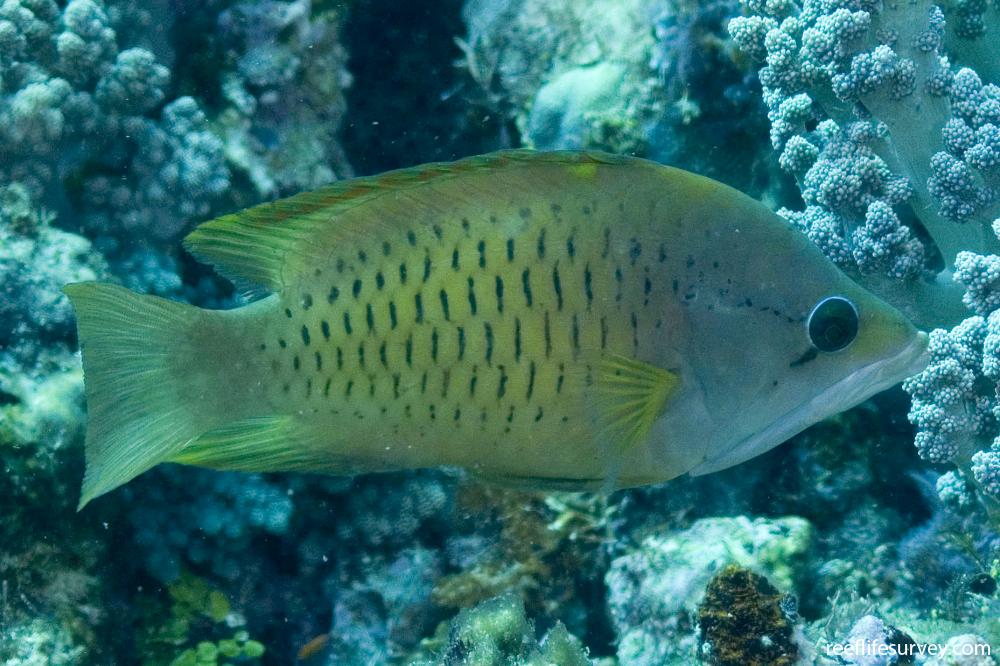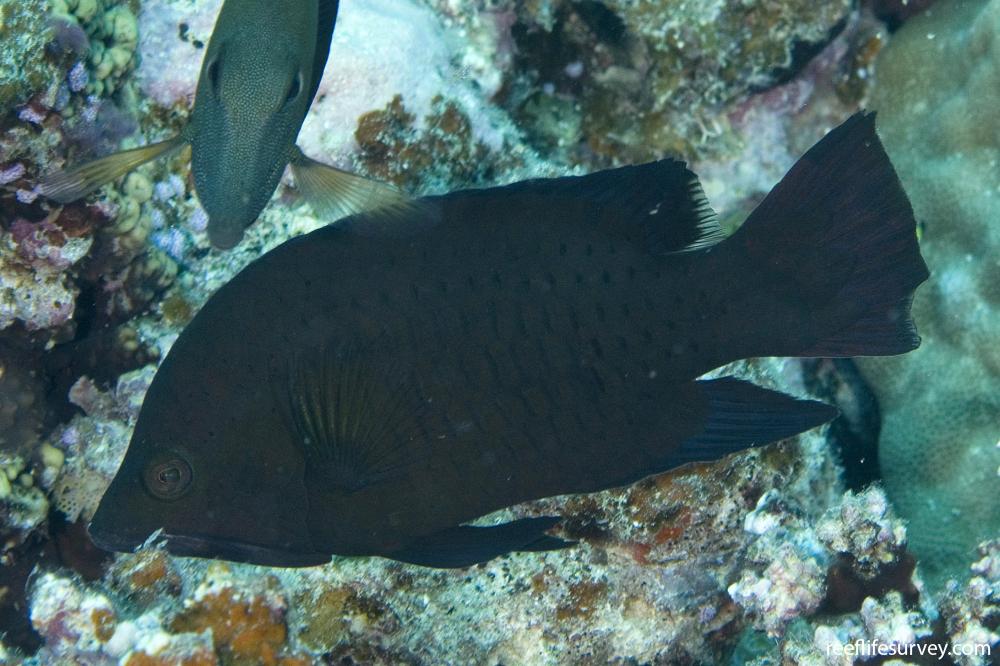Epibulus insidiator
Slingjaw wrasse | Jawslinger | Longjawed Wrasse | Slingjaw | TelescopefishSimilar Species
Same Genus
Distribution
Tropical Indo-Pacific
Description
High body profile, large mouth with highly protrusible jaws, when mouth is closed upper jaw extends beyond rear edge of operculum. Males variable in body colour but with oblique black streak through eye and large scales on side with dark margins, usually white face, multi coloured back and olive sides. Females can be either plain brown or bright yellow, brown form has small yellow spot mid back at base of dorsal. Juveniles brown with thin white lines radiating from eye and pair of thin white bands on body, each with a yellow spot at the top at base of dorsal fin. Large mouth can be rapidly everted to suck in passing prey. Highly similar E. brevis, from SE Asia, lacks black stripe through eye of colourful male.
Information
Max Size: 54 cm
Sea Temperature Range: 22.3-31.2°C
Depth: 1-42 m
Habitat Generalization Index: 22.88
Also referred to as the SGI (Species Generalisation Index), this describes the habitat niche breadth of the species. Species with values less than 15 are found in a relatively narrow range of reef habitat types (specialists), while those over 25 may be found on most hard substrates within their range (generalists). Learn more here.
Conservation and Rarity
IUCN Status: Least Concern
Occurrence: Common (31.7% of sites)
Occurrence describes how often the species is found on surveys within its distribution. It is calculated as the % of reef sites surveyed by RLS divers across all the ecoregions in which the species has been observed
Abundance: Few (2 per transect)
Abundance is calculated as the average number of individuals recorded per RLS transect, where present.
Edit by: Joe Shields














